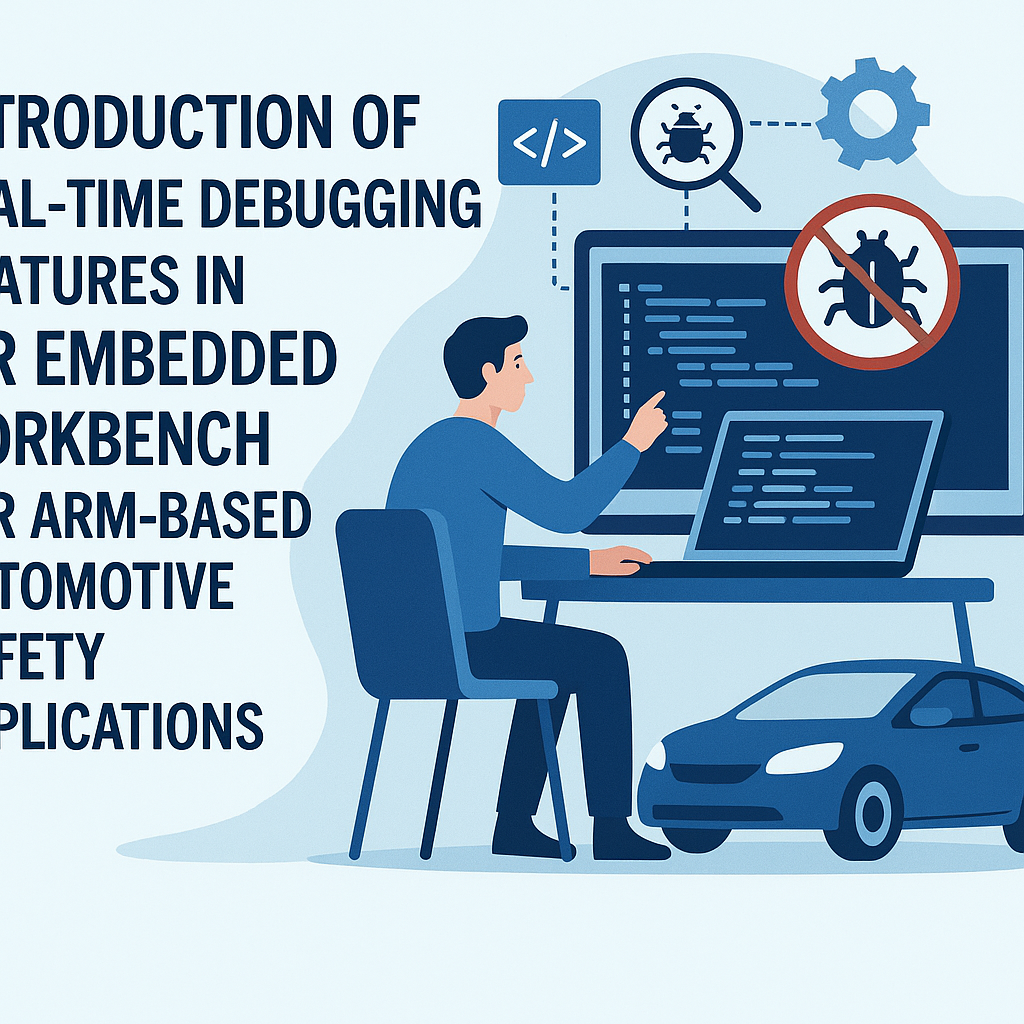Introduction
The automotive industry is rapidly evolving, with an increasing emphasis on safety, efficiency, and reliability. As software systems in vehicles become more complex, the need for effective debugging tools is more critical than ever. IAR Embedded Workbench has introduced real-time debugging features specially designed for ARM-based automotive safety applications. This blog post will explore these new features, their benefits, and how they enhance the development process.
What is IAR Embedded Workbench?
IAR Embedded Workbench is a comprehensive development tool suite for embedded systems. It provides developers with a powerful integrated development environment (IDE) that includes a compiler, debugger, and utilities for building and optimizing embedded software. With the introduction of real-time debugging features, it takes a significant leap forward in addressing the needs of automotive software development.
Real-time Debugging Features
The latest version of IAR Embedded Workbench for ARM introduces several key features aimed at improving the debugging experience:
- Enhanced Breakpoint Management: Developers can now set breakpoints dynamically while the program is running, allowing for more flexible debugging sessions.
- Live Variable Monitoring: This feature enables users to monitor the values of variables in real-time, providing immediate feedback on how the software behaves during execution.
- Integration with Safety Standards: The tool supports the rigorous requirements of automotive safety standards such as ISO 26262, ensuring that applications can be developed and verified according to industry regulations.
- Improved Trace Capabilities: The enhanced tracing functionality allows developers to capture and analyze execution flow, making it easier to identify performance bottlenecks and bugs.
- Multi-core Debugging: For applications that utilize multiple cores, the new tools provide seamless debugging across different processors, simplifying the development of complex automotive systems.
Benefits of Real-time Debugging in Automotive Safety Applications
Implementing real-time debugging features offers several advantages for developers working on automotive safety applications:
- Increased Efficiency: Real-time insights into the software execution process allow developers to identify issues quickly, reducing the time spent on debugging.
- Enhanced Software Quality: By monitoring software behavior as it runs, developers can catch errors and unexpected behavior early in the development cycle, leading to higher quality software.
- Compliance with Safety Standards: The ability to demonstrate compliance with safety requirements is crucial in the automotive industry. Real-time debugging features support the validation and verification processes mandated by standards like ISO 26262.
- Better Collaboration: The debugging tools facilitate improved communication among team members by providing clear insights into software performance and issues.
How to Get Started with Real-time Debugging
For developers looking to integrate real-time debugging into their workflow, here are some steps to get started:
- Download and Install: Obtain the latest version of IAR Embedded Workbench from the official website and follow the installation instructions.
- Familiarize Yourself with the IDE: Explore the IDE to understand its layout and available features, especially the debugging tools.
- Create a New Project: Start a new project targeting your ARM-based automotive platform, utilizing the provided templates and libraries.
- Implement Your Code: Write your application code, ensuring to follow best practices for safety and reliability.
- Utilize Real-time Debugging Features: During development, make use of the real-time debugging tools like live variable monitoring and enhanced breakpoints to optimize your debugging process.
- Test and Validate: Run tests on your application, using the tracing capabilities to analyze performance and ensure compliance with safety standards.
Best Practices for Using Real-time Debugging
To maximize the benefits of real-time debugging in IAR Embedded Workbench, consider the following best practices:
- Plan Your Debugging Sessions: Before starting, outline specific objectives for your debugging session to stay focused and efficient.
- Utilize Documentation: Refer to the official IAR documentation for detailed guidance on using debugging features effectively.
- Collaborate with Your Team: Share findings and insights with your team to foster collaboration and collective problem-solving.
- Regularly Update Your Tools: Keep your IAR Embedded Workbench up to date to take advantage of the latest features and improvements.
Conclusion
The introduction of real-time debugging features in IAR Embedded Workbench for ARM-based automotive safety applications marks a significant advancement in embedded software development. These tools not only enhance the debugging process but also support compliance with critical safety standards, ultimately leading to the creation of safer and more reliable automotive systems. By leveraging these new capabilities, developers can streamline their workflows, improve software quality, and contribute to the success of the automotive industry.



